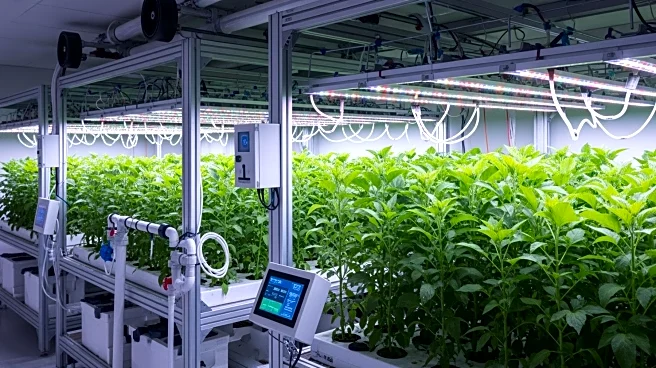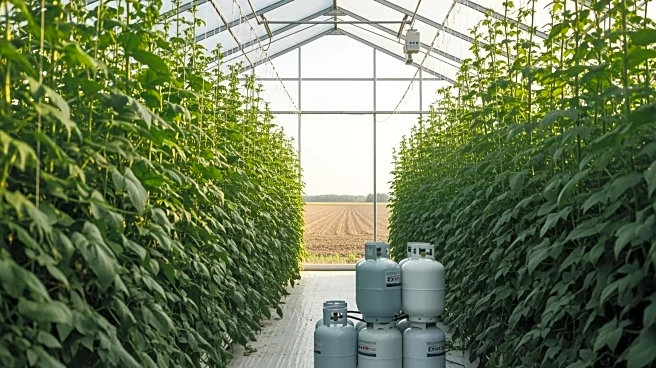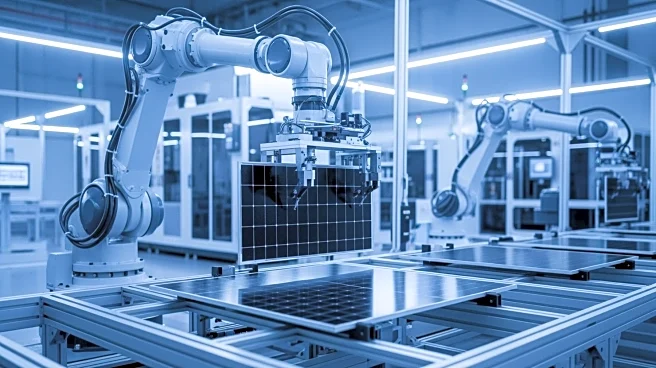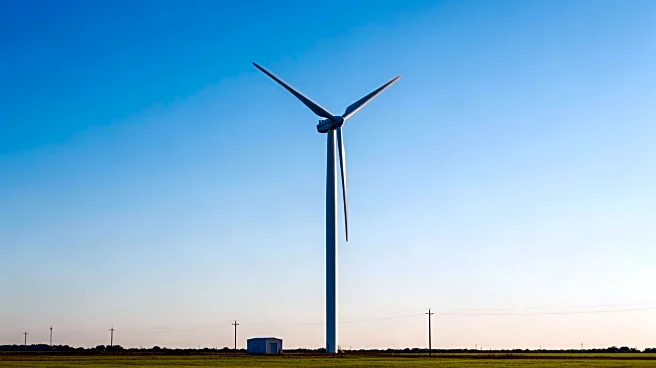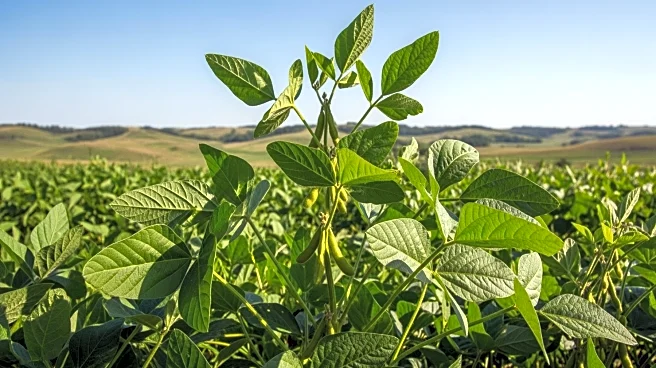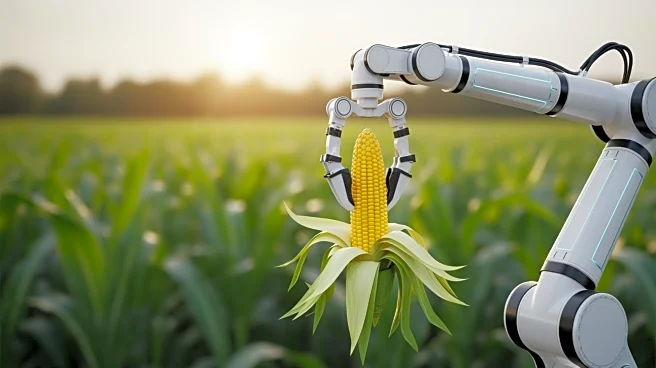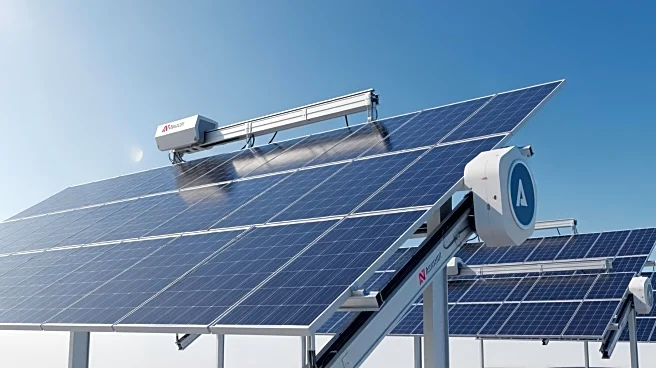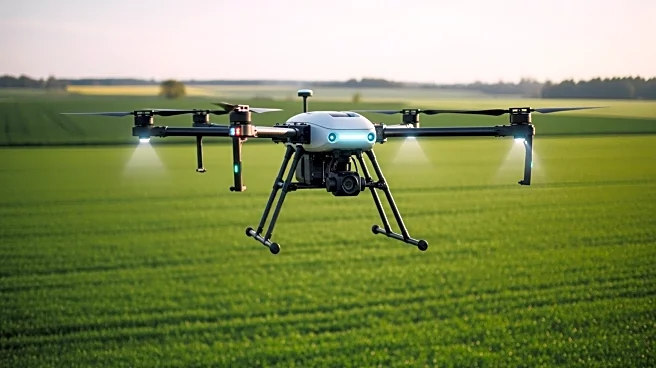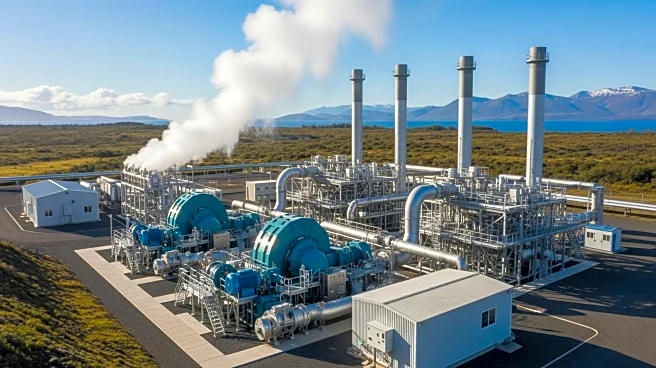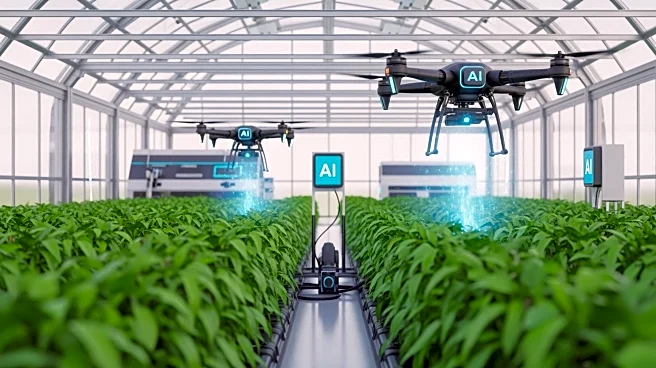What's Happening?
The U.S. Indoor Farming Market is anticipated to grow significantly, reaching USD 8.02 billion by 2030, according to a report by DataM Intelligence. This growth is driven by a compound annual growth rate (CAGR) of 11.9% from 2024 to 2030. The increasing
consumer demand for organic, fresh, and locally sourced produce is propelling the adoption of indoor farming technologies. These technologies offer sustainable cultivation practices that use less water and space while minimizing pesticide use. The vertical farming segment is expected to experience the fastest growth due to the rising demand for sustainable fruit and vegetable production. Government initiatives promoting food security and technological innovation are also supporting this trend.
Why It's Important?
The expansion of the indoor farming market is significant for several reasons. It addresses the growing consumer preference for organic and pesticide-free produce, which is becoming increasingly important as environmental concerns rise. The ability of indoor farms to operate year-round and reduce water consumption makes them a sustainable solution for food production. This growth also represents a shift in agricultural practices towards more controlled and efficient methods, which could have long-term benefits for food security and resource management. The market's growth is likely to benefit technology providers and investors in the agricultural sector, as well as consumers seeking healthier food options.
What's Next?
As the market continues to grow, further advancements in technology, such as artificial intelligence and IoT-based monitoring, are expected to enhance the efficiency and scalability of indoor farming operations. The integration of renewable energy sources and smart agriculture solutions will likely reduce costs and increase accessibility for smaller operators. Additionally, increased investment from large food producers and venture-backed startups is anticipated, which could further drive innovation and commercial scalability in the sector.
Beyond the Headlines
The shift towards indoor farming could have broader implications for urban planning and land use, as more urban areas may adopt these technologies to ensure local food production. This trend could also influence employment patterns in agriculture, with a potential increase in demand for skilled workers in technology-driven farming operations. Furthermore, the focus on sustainability and resource efficiency aligns with global efforts to combat climate change, positioning the U.S. as a leader in innovative agricultural practices.
